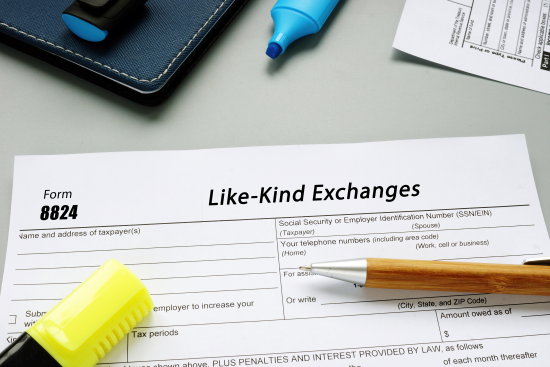Missing!
Unlock Real Estate Investment Power:
A Beginner's Guide to a 1031 Exchange
Real estate investors like you are always seeking strategies
to maximize profits and minimize taxes. One effective tool in your arsenal is
the 1031 exchange. This short guide aims to simplify the concept of 1031
exchanges, explaining their benefits and how they work, making it accessible
for investors like you.

What is a 1031 Exchange?
A 1031 exchange, derived from the tax code, allows you to
sell one property and purchase another similar one without paying immediate
taxes on the profit. This enables you to retain more capital for further
investments.
How Does a 1031 Exchange Work?
Here's a breakdown:
-45-Day Rule: Within 45 days of selling your property,
you must identify potential replacement properties. This means you need to
decide which property or properties you want to buy as a replacement. This rule
helps ensure that you move quickly to find suitable replacement properties
after selling your original property.
-180-Day Rule: After identifying potential replacement
properties, you have 180 days to complete the purchase of one or more of those
properties. This means you have around six months from the sale of your
original property to finalize the purchase of your replacement property. It's
important to complete the purchase within this timeframe to qualify for the tax
benefits of a 1031 exchange.
In simpler terms, you have 45 days to decide which property
you want to buy (the 45-day rule), and then you have 180 days to buy that
property (the 180-day rule). These rules help ensure that the exchange process
moves efficiently and that you can defer your capital gains taxes effectively.
Let’s put it all together with an example!
Imagine you're a homeowner in Kendall, Florida, looking to
move to Asheville, North Carolina. You've decided to sell your current home and
use a 1031 exchange to defer taxes on the sale while purchasing a new property
in Asheville.
1. You sell your Kendall home and identify
potential replacement properties in Asheville within 45 days of the sale.
2. After selecting your new home in Asheville, you have 180
days from the sale of your Kendall home to complete the purchase.
3. Once the purchase is finalized within the 180-day
timeframe, you can move into your new home in Asheville.
By utilizing a 1031 exchange, you can seamlessly transition
to your new home in Asheville while deferring taxes on the sale of your Kendall
property. This allows you to retain more capital for the purchase of your new
home and investment in your future in Asheville, North Carolina.
Benefits of 1031 Exchange
1. Deferred Taxes: Postponing taxes on profits allows you to
reinvest all the money into new properties, fostering greater returns.
2. Diverse Choices: You can diversify your portfolios with
different property types without tax concerns, aligning with market trends.
3. Capital Preservation: Delaying taxes means more capital
remains available for reinvestment, potentially increasing cash flow and
overall profits.
4. Future Planning: Some investors like you incorporate 1031
exchanges into estate planning, minimizing taxes and ensuring generational
wealth preservation.
Considerations and Limits
When considering a 1031 exchange, bear in mind several key
factors. Properties involved in the exchange must be similar, a requirement
that is generally manageable within the real estate sphere. Adhering to strict
timelines is crucial; you have 45 days to identify replacement properties and
180 days to complete the exchange. Seeking professional guidance is highly
advisable, ensuring compliance with IRS regulations and maximizing the benefits
of the exchange.
Before initiating a 1031 exchange, consulting tax and real
estate professionals is essential to evaluate its suitability and navigate
potential challenges effectively.
Quick Search